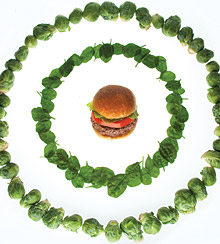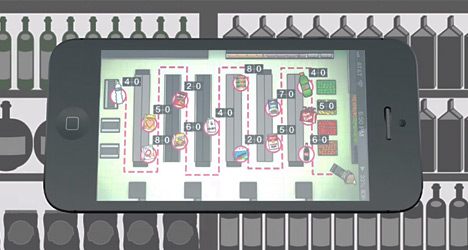There’s Salad on the Menu? Then I’ll Take the Fries
When presented with options that evoke a measure of self-control, consumers may behave in a way that contradicts their goals.
(originally published by Booz & Company)Title: Vicarious Goal Fulfillment: When the Mere Presence of a Healthy Option Leads to an Ironically Indulgent Decision (Subscription or fee required.)
Authors: Keith Wilcox et al.
Publisher: Journal of Consumer Research, vol. 36, no. 3
Date Published: October 2009
When presented with healthier options on a fast-food menu, do people actually order them? According to this paper, not usually. Strangely enough, consumers feel that the mere presence of a healthy option on the menu fulfills their desire to be more calorie-conscious, and gives them an excuse to order the least healthy choice available.
In one of four studies with broad implications for predicting consumer behavior, the authors offered 104 undergraduate students a menu of identically priced French fries, chicken nuggets, and a baked potato — or, alternatively, a menu that included those three items plus a side salad. Given the first choice, participants who tested high in self-control almost never chose the fries, the least healthy option. But when the salad was added to the menu, the same individuals were 23 percent more likely to opt for the fries. The researchers believe that the addition of a healthy menu item makes unhealthy options seem less threatening and more tempting. In addition, consumers are more likely to underestimate the caloric content of a main dish when a low-calorie side dish is included. The other three studies, targeting responses to different food choices and how choices are related to goal fulfillment, replicated these results.
Recent real-world purchasing behavior at McDonald’s bears out the conclusions of this study and shows how companies can use consumer choice research to better their performance. Industry analysts have attributed the corporation’s success over the last few years to continuing gains in the sale of burgers and fries, which in part has resulted from improved customer loyalty. However, one of the reasons McDonald’s has increased its popularity with consumers directly correlates to the addition of healthier items on the menu, even though these more nutritious options have not sold particularly well, analysts add. The authors conclude that consumers encounter dilemmas of self-discipline that bring long-term goals into conflict with immediate temptations. The upshot: Contextual clues — such as what’s on the menu next to the burger — play a big role in the choices individuals make.
Bottom Line: When presented with options that evoke a measure of self-control, consumers may behave in a way that contradicts their goals. Understanding the difference between what customers say they want and what they actually want can help companies better understand their consumer base. ![]()
Author profile:
- Matt Palmquist was a founding staff writer and is currently a contributing editor at Miller-McCune magazine. Formerly, he was an award-winning feature writer for the San Francisco–based SF Weekly.




